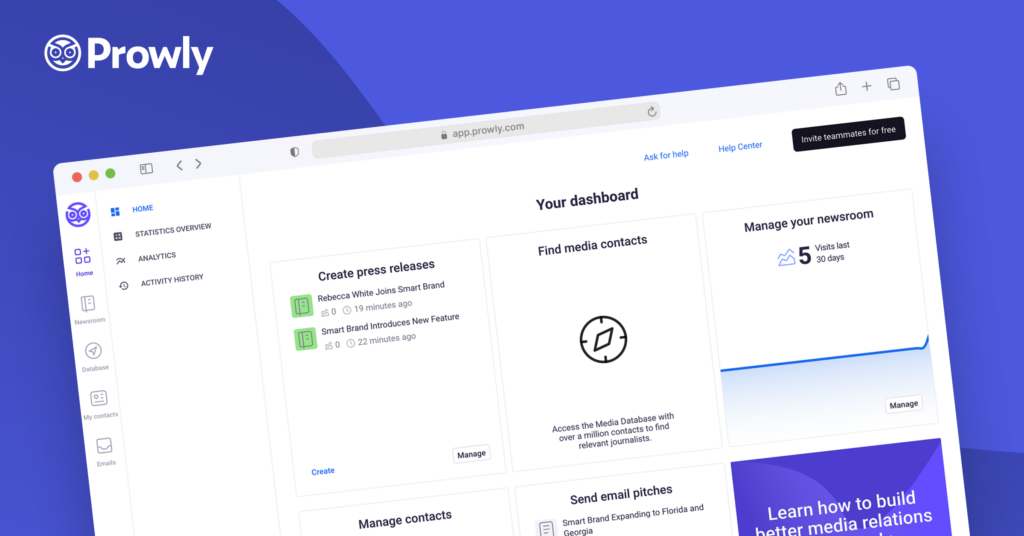Simple question: how is earned media value calculated for a PR report?
The thing is, it’s not easy at all. In fact, measuring media coverage has been a hotly debated subject from the beginning of the public relations industry.
Tracking media relations and its marketing value has to be done to justify PR costs as a business expense. That’s just a fact. For this reason, PR professionals understand a client’s demand for detailed PR evaluation reports and media clipping reports.
Yet PR success is defined by a myriad of intangibles like media mentions, glowing reviews, and influencer testimonials. Unlike other marketing areas that can measure success through direct sales, placing a monetary value on a brand’s increased credibility from a full-page magazine feature is not so easy.
This is why the PR measurement model has shifted over time to move increasingly closer to a true value assessment. The good news is that the growing availability of data and the implementation of game-changing PR technologies are improving the way the industry measures its work for PR reports.
👉 Looking for a way to measure your media coverage? Create a free coverage report with Prowly's 7-day trial and decide if it's the right tool for your PR needs.
The old way: AVE
If you’ve been in PR long enough, you’re fully aware of the AVE public relations measurement for providing results in client PR reports. This measurement was the longstanding, go-to way for calculating the value of earned media impressions by converting them into an advertising value equivalency.
It went like this: the earned media value was considered equivalent to the cost of an ad of the same size in that same publication. This calculation was simple with an ad rate kit or advertising equivalency calculator handy.
However, many PR professionals rightfully argued that an earned article holds much more weight than a paid advertisement. A news article written by a third party, in a storytelling fashion, is inherently more valuable than an advertisement because it demonstrates brand credibility and builds customer trust.
Furthermore, when an article is published online and includes a backlink to the company’s website, there’s even more marketing value through SEO.
So it became more and more evident over time that the calculation for how to track media coverage needed a substantial update.
Learn all you need to know about AVE and more meaningful metrics from this article "What is Advertising Value Equivalency in PR? (+ AVE Alternatives)."
The new way: A multi-dimensional approach
It turns out that there’s no magic formula for calculating earned media value for your PR reports, but there are plenty of data points you can gather to clearly connect PR & marketing success to news articles, influencer mentions, and customer reviews.
The following methods can be applied individually or together for a holistic approach. Each measures the value of common PR and marketing goals to paint a multi-faceted (and more valuable) PR assessment.
Wondering how to create a media report? Read about it in our recent article "How to Create a Comprehensive Media Report?"
💡 Track coverage against website traffic
When a news article is published, look for spikes in website traffic that day and the few days that follow. If coverage was online, this tracking is even easier: look into your website analytics for direct traffic from that media source.
When reviewing an online traffic source, look closely at the visitor quality from that website. If the bounce rate is low, and the average session length is healthy, then the article reached the prospective customers your client is looking for. Congratulations!
Next, look for an uptick in sales that day. If your client’s website is set up properly to capture a healthy conversion rate, then an increase in traffic from the news mention should naturally lead to an increase in sales.
💡 Value mentions as brand content
A PR mention is a third-party conversation about your brand, and it carries more weight with your customers and prospective customers than anything the company produces. It’s content creation at its best, and you didn’t pay a dime for it!
So give the media mention additional value by measuring it as brand content. You regularly pay for marketing content like blog posts and videos, so you’re familiar with their costs. Similar to comparing an advertisement’s cost to a media article, this isn’t a perfect earned media value measurement, but it’s one part of the value.
Include the media piece in your PR & marketing schedule and distribute it broadly to your customers. Post and link to it on your website, include it in your email newsletter and share it on social media. If you’ve increased its reach, you’ve instantly increased its value even further!
💡 Use media monitoring to measure customer reactions
If your team is using media monitoring tools, you have something powerful in your hands: the ability to monitor customer reactions on social media and general customer sentiment around the brand.
Look for an increase in customer mentions and activity, and then note whether the reactions are positive or negative. Customer engagement is highly valuable and should be a part of your measurement equation. In fact, if customer sentiment is negative, you’ll be in a position to step in quickly to avoid a growing PR crisis.
Media monitoring tools also analyze your company’s share of voice (SOV) against its competitors, so look for increases in SOV after major news features that may have gained your brand more notice.
If you don’t have a media monitoring tool in place yet, you can always take this task on yourself. Look at each of the publication’s social media feeds to see if they’ve shared your client piece there. If so, track engagement from their followers, like comments and shares. Follow re-tweets and shares to roughly estimate the amplification of the media mention.
💡 Give value to the publication's demographic
There is one instance where looking at the advertising media kit for a publication is still very helpful for PR pros. That’s when you’re looking at the audience demographics they report there.
Advertising media kits include the demographic breakdowns of an outlet’s readership, usually by age, gender, and income. Based on this information, you can assess whether a mention in one publication may be more valuable than in another because its audience is more closely aligned to your brand’s product or service.
When reporting a media mention, don’t forget to include this important information. Share not only the publication and its total audience number, but the demographics that show the excellent audience fit.
Pro-tip for PR reports: Start with a PR software solution
Some successes can be predicted by the work put into the very first steps. This is particularly true for PR campaigns.
Before you even lift a finger and start creating those PR reports and measuring the value of those earned media mentions, you’ll need to build an eye-catching press kit and story pitch to impress the media.
Not only that, you’ll want to ensure that your media list is targeted and accurate. Your PR pitches shouldn’t be distributed too widely; instead, they should be focused on the media outlets that speak directly to the brand’s customers and prospective customers.
A concise and focused media pitch list will put you in the best position to deliver the highest quality, highest value mentions for the brand.
Honing in on this part of the PR process can be enhanced with PR software. These technologies are changing the game! Automated PR software systems like Prowly offer substantial, searchable-by-topic-and-location media databases that allow you to craft perfect-fit media lists. You can then build visually-appealing press releases and online newsrooms for the delivery of your media pitches.

PR software also gives you excellent insights into your PR efforts from the moment you send out your press release.
This means that from the beginning of your PR campaign, you’ll be receiving important real-time feedback that allows you to pivot your pitch as needed. You’ll be able to track open and click-through rates from your media contact list and track resulting media mentions. You’ll know right away if your story pitch is getting media interest or whether you may need to tweak it for a better response.
Turn a page
If you’ve been relying on old PR value assessments for your company and clients’ campaigns, it’s time to turn a new leaf and give these new measurement options a try.
Although it may have felt more simple to calculate a single monetary value for your PR mention, these new methods actually speak the current language of marketing, which combines website, social media, and brand content data to create a multi-faceted value from media mentions.
We speak in terms of data successes these days, and these new measurement methods will paint a better picture of your PR mention’s worth in your PR reports.
Cover image by Daniel Fazio

